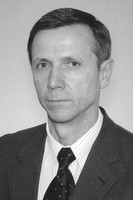Logorythmics based school physical education model for learning, correction and development
Фотографии:
ˑ:
PhD, Professor V.A. Vishnevsky1
A.G. Garaeva2
PhD, Associate Professor V.A. Rodionov1
1Surgut State University, Surgut
2Beloyarsk secondary school № 3, Surgut district
National educational system reforms radically change the school physical education paradigm to prioritize the all-round educational, health, corrective, developmental and inclusive educational aspects of the physical education service to the increasingly diverse school population. The national health statistics for the last few years have reported the numbers of children with psychomotor and verbal disorders being on the rise. The study analyzes benefits of a logorythmics based school physical education model for learning, correction and development in application to children with mental retardations. The pre-experimental functionality tests found high tensions of the regulation systems and negative responses to the orthostatic probes. Immediate effects of the logorythmics based school physical education model were found to include: moderate growth of the autonomous nervous system response in the sympathetic department and decrease in the parasympathetic department. Despite the meaningful progress in the wellbeing self-rates, tests showed further growth in the stress index, diastolic blood pressure, and worsening of the orthostatic test rates. The proportion of the satisfactorily-adapted children was tested to fall from 33.3% to 11.1%: and with the growing stress on adaptation systems found to grow from 33.3% to 55.6%. After the year-long model piloting experiment, the EG was tested with meaningful verbal progress as verified by the general speech development, pronunciation, phonemic perception, language analytical, speaking fluency and reading aspects and skills. The standard education quality rates was tested to meaningfully grow too, particularly the educational competencies, needs and motivations in the health culture domain, practical health experience, learning determination, sociometrics, personality anxiety, cognitive and behavioral components of moral consciousness, ethical development and the data processing accuracy test rates.
Keywords: logorythmics, school physical education, children with mental retardations.
References
- Antonyuk S.D., Mukina E.Yu., Yakovlev V.N. et al. Formirovanie kultury zdorovya u detey s osobymi obrazovatelnymi potrebnostyami [Formation of health culture in children with special educational needs]. Fizicheskaya kultura: vospitanie, obrazovanie, trenirovka, 2006. no. 4. pp. 42-44.
- Eryusheva T.V., Karas T.Yu. Realizatsiya mezhpredmetnykh svyazey na urokakh fizicheskoy kultury [Implementation of interdisciplinary connections at physical education lessons]. «Aktualnye problem vnedreniya Vserossiyskogo fizkulturno-sportivnogo kompleksa GTO v sistemu obrazovaniya i sposoby ikh resheniya» [Actual problems of GTO complex implementation in educational system and solutions] Proc. regional res.-pract. seminar (March23 2016). Komsomolsk-on-Amur: AmSPHU publ., 2016. pp. 32-36.
- Lebedeva A.A. Uroki logoritmiki v shkole 8-go vida [Logistics lessons at 8th type school]. Innovative pedagogical technologies. Proc. International Scientific Conference (Kazan, October 2014). Kazan: Book publ., 2014. pp. 237-240.
- Podsvirova S.P. Formirovanie universalnykh uchebnykh deystviy sredstvami fizicheskoy kultury [Formation of universal educational actions by means of physical education]. Sovremennye nauchnye issledovaniya i innovatsii. 2011. no. 1. P. 27.



 Журнал "THEORY AND PRACTICE
Журнал "THEORY AND PRACTICE